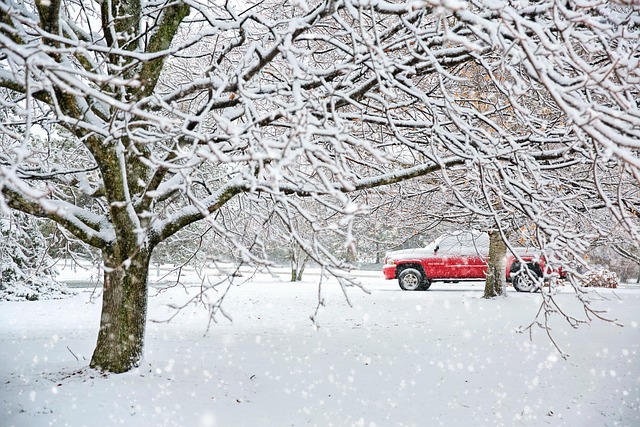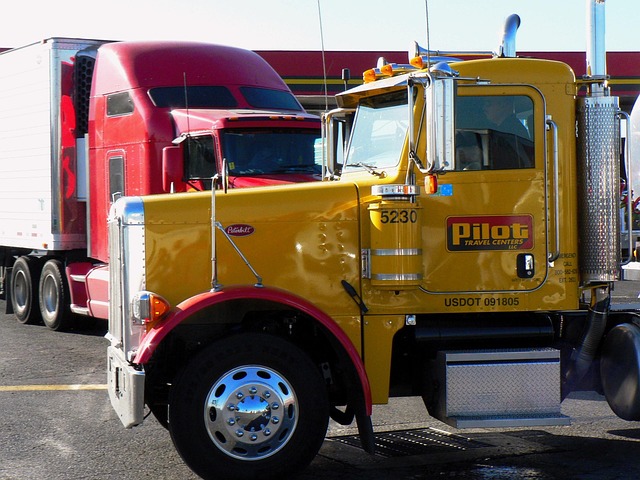Looking to register your car in California? This comprehensive guide walks you through every step, from understanding eligibility requirements to securing your license plate. We’ll break down the necessary documents, whether you visit the DMV or utilize online services, and even emphasize the importance of accurately verifying your Vehicle Identification Number (VIN) using a trusted dmv vin verifier. Simplify the process today!
- Understand Eligibility Requirements for Car Registration in California
- Gather Necessary Documents for Vehicle Registration
- Visit the DMV or Use Online Services for Registration
- Verify Vehicle Identification Number (VIN) Accuracy
- Pay Registration Fees and Receive Your License Plate
Understand Eligibility Requirements for Car Registration in California

Before diving into the registration process, it’s crucial to understand the eligibility requirements set by the California Department of Motor Vehicles (DMV). To register a car in California, your vehicle must meet certain criteria, such as being in safe operating condition and not having any outstanding legal issues. Additionally, you’ll need to provide proof of insurance, pay registration fees, and pass a smog test if applicable. One efficient way to verify the Vehicle Identification Number (VIN) is through a DMV-approved vin verifier, like those offered by mobile inspection services. These mobile vin inspection options can save you time by allowing you to complete the VIN verification process from the comfort of your home or location of choice.
Another important consideration is ensuring that your vehicle isn’t a salvage title or has any outstanding loans. Using a mobile vin verifier can help in this regard, as they often cross-check the VIN against national databases to confirm the vehicle’s history and current status. Keep in mind that certain types of vehicles, like classic cars or those with modified engine displacement, might have specific requirements. By being informed about these eligibility factors, you’ll be better equipped to navigate the registration process smoothly and avoid potential delays.
Gather Necessary Documents for Vehicle Registration

Before heading to the California Department of Motor Vehicles (DMV) for registration, ensure you have all the required documents. This process typically involves a vehicle owner’s identification, such as a valid driver’s license or state ID card. Additionally, proof of insurance is mandatory; you can provide this through an insurance card or declaration page. The DMV also requires a completed Vehicle Registration Application form (Form DV-140), which can be obtained online or in person. One crucial document to have on hand is the Vehicle Identification Number (VIN) verifier, which can often be sourced from reputable third-party services that offer mobile VIN verification and inspection.
Another essential step is ensuring your vehicle’s title is ready. If you’re the initial owner, a bill of sale or manufacturer’s certificate of origin may be needed. For used vehicles, a notarized signature from the previous owner might be required. Some buyers opt for a mobile VIN inspection service to verify the car’s history and condition before registration. This can provide peace of mind and help ensure that all documents are in order.
Visit the DMV or Use Online Services for Registration

In California, registering a car involves either visiting the Department of Motor Vehicles (DMV) or utilizing their online services. The traditional approach entails scheduling an appointment at your nearest DMV field office, where you’ll need to bring essential documents like proof of ownership, identification, and insurance. An alternative method is to register online, which offers convenience and speed. Before initiating the process, ensure your vehicle has passed all necessary inspections, including a VIN (Vehicle Identification Number) inspection using a reliable tool, such as a mobile VIN verifier.
When opting for online registration, California’s DMV provides a user-friendly platform where you can input your vehicle details, upload required documents, and complete the registration process digitally. This method not only saves time but also allows you to avoid the often bustling and labyrinthine in-person experience. For added convenience, consider using mobile VIN verification tools that enable you to check your vehicle’s history remotely, enhancing transparency throughout the registration journey.
Verify Vehicle Identification Number (VIN) Accuracy

Before registering your car in California, it’s crucial to ensure the Vehicle Identification Number (VIN) is accurate. This unique 17-character code is a critical component of your vehicle’s history and safety features. A simple yet effective step is to use a DMV VIN verifier or mobile vin inspection tool to cross-check the number against official databases. These services provide instant validation, ensuring no discrepancies exist between the reported VIN and the actual vehicle data.
Accurate VIN information is essential for several reasons. It aids in identifying your car’s make, model, year, and specific features, which is vital for registration and insurance purposes. Moreover, a correct VIN ensures compliance with California’s regulations, preventing potential delays or issues during the registration process. Therefore, taking the time to verify the VIN accurately using readily available mobile vin verification tools can save you hassle and ensure a smooth registration experience.
Pay Registration Fees and Receive Your License Plate

After completing your vehicle’s registration application at the DMV, it’s time to pay the required fees. This usually involves a one-time registration fee and an annual license plate fee. You can typically pay using cash, check, or debit/credit card. Once your payment is processed, you will receive your California license plates. These plates are permanently assigned to your vehicle and must be displayed on both the front and rear of your car.
Remember, a valid license plate is crucial for legally operating your vehicle on California roads. If you need a replacement or additional plates, you can request them from the DMV or often through an online portal. For added convenience, some services offer mobile vin inspection and verification, allowing you to complete the plate registration process even faster from the comfort of your home.
Registering a car in California is a straightforward process that requires understanding the eligibility criteria, gathering essential documents, and completing the registration at the DMV or online. Verifying the Vehicle Identification Number (VIN) accuracy is crucial to ensure the vehicle’s history is clear. Once verified, paying the registration fees will grant you a set of license plates, marking your vehicle as officially registered in the Golden State. Utilize the services of a dmv vin verifier to simplify and secure this important administrative task.
